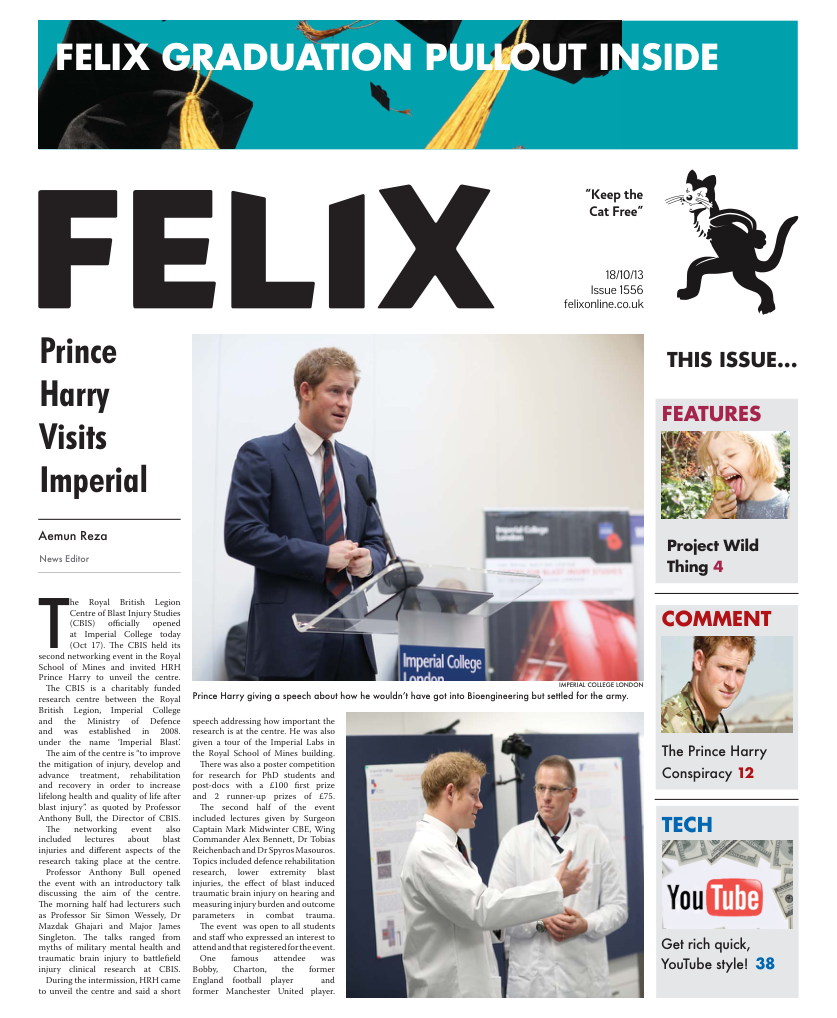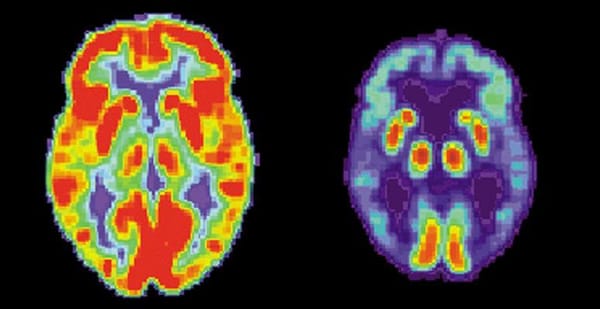Higgs-tory through the ages: fifty years yields Nobel prize
Philippa Skett gives us an exciting history lesson about the Higgs boson and how its existence was finally confirmed last year

Last week saw the Nobel Prize in Physics go to Peter Higgs and Francois Englert for their theorisation of the Higgs Boson, only months after its confirmed detection at CERN. The controversially named “God Particle” has delivered excitement (and mass) to both the scientific community and the general public, with the tale behind this unassuming boson featuring the twists and turns of a race in science never seen before. It is also a story with many leading roles, but who deserved the prize at the end is still a matter of debate.
It all began in 1964 when Peter Higgs, a physicist from the University of Edinburgh, suggested particles take mass from an invisible energy field, and, as this field needed an associated particle, he suggested that a boson must also exist. Detection of the boson would in turn provide affirmation of the Standard Model, a theory of the fundamental interactions between subatomic particles. The boson was essentially a missing piece of a large particle puzzle, that without it could not confirm some of the key ideas that underlie theoretical physics.
Peter Higgs was the first of several researchers to publish a paper theorising the boson’s existence, including our very own Professor Tom Kibble from the Blackett laboratory. Unfortunately, the paper Tom Kibble wrote, alongside other researchers Gerald Guralnik and Carl Richard Hagen, was the last to be published in the Physics journal Physical Review Letters about the topic, costing him the Nobel Prize. Although he stated that he regards “[his] treatment as the most thorough and complete,” he sadly was a few months too late.
After the theorisation of the boson, more scientists stepped forward to contribute to the function of this mysterious particle. Steven Weinberg, an American professor of physics at Harvard University, suggested the idea that the boson will provide the unification of electromagnetic and weak forces, two of the four fundamental interactions within nature. Not only that, but Gerard ‘t Hooft, a Dutch physicist and professor at Utrecht University, based in the Netherlands, built on this by proving it mathematically.
Hooft went on to win the Nobel Prize for this in 1999; the boson, even though still theoretical at this point, was already demanding international interest and delivering awards unlike any other. It was in this time that the term “God Particle” was coined by Leon Lederman, an American experimental physicist. He coined the term “God Particle” in the title of a popular science book he wrote because that, “One, the publisher wouldn’t let us call it the Goddamn Particle, though that might be a more appropriate title, given its villainous nature and the expense it is causing. And two, there is a connection, of sorts, to another book, a much older one...”
The media loved it, much to the dismay of Higgs himself; not because his name itself became somewhat neglected, but because of the sensationalist connotations this presented. Humbly, he himself would rarely refer to the particle in question as either the God Particle or the Higgs Boson – displaying more than a modicum of modesty often undetected in today’s scientific researchers. As speculation and controversy surrounding the so-called “God Particle” ebbed and flowed through the media, scientists were now burrowed away from prying eyes and had began to design and build the Large Hadron Collider (LHC). This was to become the largest, most powerful particle collider, and, with a price tag of $8 billion, was the most expensive too. Its overall function was to test and predict various theories within particle physics, but excitement around the LHC was centred on the idea that one day it could allow for the creation of a Higgs Boson.
The LHC was constructed between 1983 and 1988, and crossed between Switzerland and France at four points throughout its 27km long circumference. It officially went live on the 19th of September 2008, sending protons whizzing through the tunnels at speeds of only 3 metres per second slower than the speed of light and them making 11,000 complete revolutions of the main ring per second. It seemed that the final hurdle to overcome in this theoretical physics race was to actually detect the boson, although this was categorically easier said than done. To do this, two separate, opposing teams of scientists huddled away at CERN in Geneva, Switzerland, to independently discover this elusive particle. The two teams, Atlas and CMS, were named after the two gigantic detectors built into the Large Hadron Collider that could measure the outputs of proton particles being smashed together at high speeds.
The collisions were predicted to produce the boson that would then immediately decay into a multitude of different subatomic particle combinations, including lots of excess energy in the form of gamma rays. A boson is an elementary particle that can mediate forces between other bodies, such as the electromagnetic field, or the strong force that binds atoms together from nucleons and protons. They often break down into lighter particles in an attempt to attain stability; the Higgs Boson was predicted to break down into a W boson, which could then break down further into a lepton, among other combinations.
These breakdown products were what the LHC was trying to detect, and would be measured by Atlas or CMS- they manifested as anomalies in data output, represented as “bumps” on an otherwise consistent line on a graph. These bumps represented an unexpected excess of gamma rays or other decay residuals; possibly from the aftermath of a Higgs Boson disintegration. Bumps in the data were common, but through repeated collisions were smoothed out as they disappeared through the realms of statistical averaging. It was only when the bumps remained, and became less anomalous and more predictable, that the two teams started to sweat.
Truth in science is all about statistical significance. If the odds of something occurring are above a certain quantitative threshold, it is considered to be a truth, and the highest threshold for this determination is considered to be a “5-sigma level.” This means that if the odds of something taking place by chance are less than 1 in 3.5 million, then you can confidently state that what is occurring the other 3,499,999 times is the norm, and can be heralded as the truth.
A persisting bump on the graphs of one team corresponded to a gamma ray of mass of around 128 billion electron volts. The gamma rays produced by the Higgs Boson decay were theorised to lie between 115 billion to 200 billion electron volts of energy, so as the bump persisted in the datasets produced by particle collisions, excitement, coupled with the characteristic skeptism all good researchers harbour, started to grow.
It was team Atlas that was fortunate to nurture this bump throughout repeated tests until its occurrence had reached a 3-sigma level: the chances of it being a systematic fluke were only 1 in 740.
CMS were also seeing important fluctuations of energy, this time in the form of a “four-lepton” signal. The results were almost at a 3-sigma level, and it seemed that both Atlas and CMS had simultaneously and independently cracked the code. Neither could boast a 5-sigma significance however, so the race was still on.
Dr Heuer, the Director General of CERN, revelled in these first hints of particle discovery, so set up a symposium in CERN. Dr Heuer reasoned that a sigma significance of 4.9 would not be enough to call something a discovery, but two experiments boasting such a value would combine to make a sigma value that would be enough to tilt the scale in favour of statistical significance. It was now a matter of combining data in the right way to produce that statistically sound support for the boson’s existence. It was a solitary graduate student that finally produced results that breached the 5-sigma level, but the discovery was not ultimately confirmed until another pair of graduate students had brought all the datasets together and combined them to produce a result of a significance level of 5.08-sigma. They had finally found the boson.
This result was the combination of datasets spanning 1,000 trillion proton-proton collisions, resulting in the formation of 240,000 possible Higgs Bosons, 350 pairs of gamma rays and 8 sets of lightweight particles from the lepton channels. The two teams presented their work simultaneously at the CERN symposium on July the 4th , 2012, with the whole world watching. CMS went first, followed by Atlas, and then Dr Heuer declared that they had indeed found a previously unknown particle. Dr Higgs was present in the audience, was seen to be crying as the ripples of the news began to spread from the CERN epicentre to right around the world. Follow up data analysis was done, and on the 14th of March, 2013, it was tentatively confirmed to be the Higgs Boson.
So who really did deserve the Nobel Prize? Some people suggest that in reality, those at CERN who made the discovery should be heralded with the greatest accolade that mankind has to offer, whilst others are still squabbling about the theoretical history of the particle and who exactly should be recognised for theorising the boson in the first place.
The Royal Swedish Academy of Sciences announced last week that Peter Higgs and Francois Englert had won the prize “for the theoretical discovery of a mechanism that contributes to our understanding of the origin of mass of subatomic particles, and which recently was confirmed through the discovery of the predicted fundamental particle, by the ATLAS and CMS experiments at CERN’s Large Hadron Collider.”
CERN was not attributed with the Nobel Prize for its role in this marathon, and it could be humoured whether or not Higgs would have even got the prize if the particle’s existence had not been proven. Needless to say, the unfolding of the discovery of the boson is a great story to tell, and no doubt will become one of scientific legend as the years pass.









